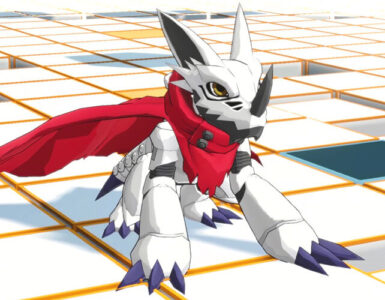UPDATE: The free demo of the game is finally playable on itch.io! Players will get to take on the nasty Rafflesia, based on the foul-smelling plant found in Singapore and other parts of Southeast Asia!
For the longest time, video games have constantly been associated with just being a form of entertainment and reprieve by the masses and media. However, with the advancements in technology across the globe, as well as its increasing accessibility, the medium has since evolved to also become a platform for artistic and cultural expression. This is best seen in indie titles such as Hellblade: Senua’s Sacrifice, Journey, Children of Morta, and Hyperlight Drifter.
Even in a small country such as Singapore, video games have definitely become an increasingly popular medium in which storytellers can craft some really compelling and unique narratives, particularly because Singaporean and, by extension, Southeast Asian culture, has yet to make a breakthrough in the market on a global scale.
For local game devs like Andrew Teo, it’s all about bringing about exposure on the culture they grew up in.
The 32-year-old Singaporean is the developer of Ghostlore, an Action RPG inspired by the likes of Diablo, but one very entrenched in Southeast Asian folklore. Aside from being a game dev himself, Teo also happens to be a senior game artist at a mobile games company by day. Ghostlore (at the time being at least) is a passion project that he has undertaken for the better part of a year or so. Though the game is still very much in its early stages, he is hard at work on it, and has been putting up preview footage on his game’s Facebook and Twitter pages.
Now, what’s most striking about Ghostlore is that it is set against a Southeast Asian backdrop, which instantly sets it apart from other games in the genre. Instead of fighting angels and demons in Victorian-era cathedrals, players roam the tropical seaside town of Seaport (fashioned after Singapore, being a port city itself), slaying supernatural beings known as Mogui (魔鬼). The Mogui are creatures from Southeast Asian mythology, and for many locals, will feel right at home (and maybe even raise hairs) when fighting their pixelated forms.

The pontianak, in particular, struck our attention. One of the most iconic supernatural beings in all of Southeast Asia, it is the equivalent of the Western vampire, with the main difference being pontianaks supposedly originate from the spirits of women who died tragically while pregnant. It typically assumes the form of a woman sporting extremely long hair and a white gown, and can usually be found around banana tree plantations.
Being one of the more well-known Southeast Asian creepies, it was only fitting that it was one of the first creatures Teo incorporated into Ghostlore, including the iconic banana tree it is commonly associated with as well. Of course, being a game that celebrates Southeast Asian culture, other creatures he has included in the game include the Chinese er gui (饿鬼/hungry ghost), the Indonesian athol/ahool (giant bat cryptid), and the Filipino tikbalang (horse-headed trickster). Those who have heard (and possibly have been terrified) of these creatures will no doubt be thrilled to slice and dice them in the game itself.
“I have two main criteria when I decide which mythical creature to turn into a monster in Ghostlore. Firstly, how well-known the creature is in Singapore, and secondly, whether the creature is described to have abilities that would be fun for players to fight against,” Teo explains. “The pontianak fulfills both criteria. It is arguably the most popular ghost in Singapore, and its spirit is said to be housed in a banana tree. This gave me the idea in order to truly defeat the pontianak, the player must focus on attacking the tree while avoiding the ghostly woman.”
As a game with “lore” in its name, Ghostlore is primarily based on the local Singaporean legend of Redhill, the name of a town in the Little Red Dot. For those who don’t live in Singapore, Redhill was supposedly named after the tragic death of a young boy from the Malayan Sultanate of the 15th and 16th Centuries named Hang Nadim. He was ordered to be killed by his sultan out of fear for one day growing up and taking over his place as ruler after cleverly routing an attack on his village by a horde of swordfish. For more on this story, here’s the full story on Wikipedia.
Teo understands that, despite the amount of resources one has at their disposal to make a game these days, the prevalence of Western culture in media means stories such as the legend of Redhill get unintentionally shoved to the side, despite being as narratively rich as its Western counterparts. The “universal” nature of the story, Teo believes, is what will bring Ghostlore to gamers even beyond Southeast Asia.
“I can guarantee you that you can show [the Redhill legend] to anyone, from Africa to Australia, and they will understand it,” said Teo. “The problem is [a lack of] awareness. This is a universal story. What makes it a universal story is that it illustrates a certain truth about life and the human condition, regardless of time and place.”
You can even update the story to be about modern times and it will still work. Imagine a company tasked to deal with a contagious virus, and a bright young intern proposes an innovative solution that solves the crisis but also completely upstages the boss. [Similar to how Hang Nadim was killed out of jealousy], the intern was subsequently fired for stepping out of line. Even here, the heart of the story is preserved.”
Despite Southeast Asia being rich in folklore, Teo realised that the sheer diversity in cultures is quite a double-edged sword. While there are a ton of cultures to pull from for ideas, he fears that, being just a sole creator, he might accidentally misrepresent a certain nation’s folklore, given how closely-knit some communities are to their mythology.
As such, instead of simply doing crowdfunding, Teo hopes to form something akin to a “crowdstorming” group that includes folks from all over the region collectively brainstorming ideas based on these mythologies. This allows him to be able to pull from more reliable sources and create a stronger foundation for the game, instead of having to bear the sole responsibility of trying to do different communities justice.
“Although I do my best to research, oversights could still happen where, ‘you made a joke out of this, but among our culture, this is actually a very serious thing.’ or ‘you completely misunderstood the significance of this traditional story.’
My dream solution would be to have something like a focus group of people from diverse backgrounds, inclusive and with equal representation. This focus group would be allowed to vet through the story of Ghostlore from start to finish, and should anything prove to be objectionable, they can veto my creative decision and I will try to come up with something better. I will put members of this focus group into the credits as contributors.
A number of people have reached out to me telling me that they are willing to crowdfund my game, but what I am more interested in is something I’d like to call crowdstorming, or crowd brainstorming.”

Currently, Teo hasn’t applied for any government funding from IMDA, simply because he feels his current job provides enough to fund his project. Furthermore, being given a grant means certain strings might be attached, and he feels those aspects are things that he might “not be prepared to handle” with respect to Ghostlore. So for now, he’s taking the fully indie route, one which we laud wholeheartedly.
That said, Teo is appreciative of the Singapore government being more directly involved in establishing game development in the country, having let the likes of Riot Games open up a branch in Singapore.
As for the demo version of Ghostlore, Teo says folks can expect it to come “in a few weeks”. It is slated to contain one scenario, where players will need to fight against a dangerous monster known as “The Rafflesia”. If that isn’t something to look forward to, we don’t know what is. But we’re certain that with creators like Andrew Teo, it looks like Singapore’s indie game dev scene is taking another big step forward.
Marion has a serious RPG addiction. Sometimes it bleeds into real life; he forgets to sleep because he thinks he has a Witcher’s body clock. Forgive him in advance if he suddenly blurts out terms such as “Mind Flayer” and “Magic Missile”, because never once does he stop thinking about his next Dungeons & Dragons game.














